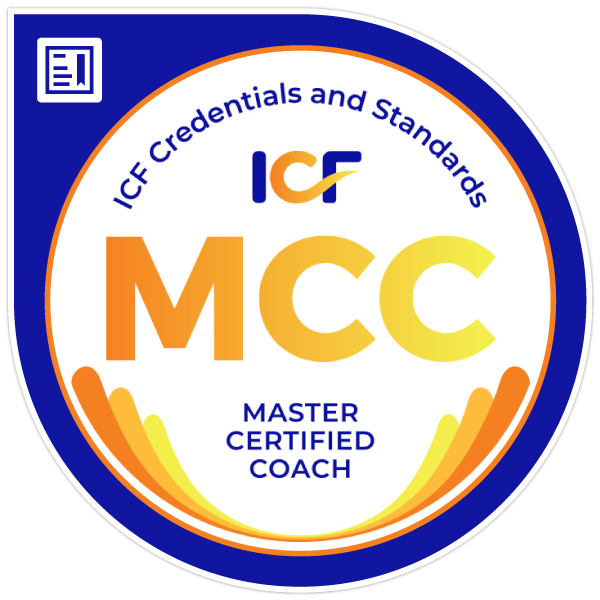We’re excited to introduce you to the always interesting and insightful Kimberly Jackson. We hope you’ll enjoy our conversation with Kimberly below.
Hi Kimberly, thanks for joining us today. We’d love to start by getting your thoughts on what you are seeing as some the biggest trends emerging in your industry
The world of coaching is undergoing a seismic shift, with emerging trends set to redefine its boundaries and possibilities. From digital transformation and the integration of artificial intelligence to the growing emphasis on mental health and the global rise of coaching cultures within organizations, these developments are reaping the landscape of personal and professional growth.
The Top 5 Trends Shaping the Future of Coaching based on my experiences and insights are:
Democratization – One of the top trends shaping the future of coaching is the democratization of coaching, which aims to make coaching accessible to all talent within a business. Traditionally, coaching has been limited to top executives or high-potential employees. However, the democratization of coaching focuses on providing coaching opportunities to a wider range of employees, regardless of their hierarchical position.
The benefits of this trend for businesses are significant. By democratizing coaching, organizations can unlock the potential of all employees and foster a culture of continuous learning and development. It allows for the identification and nurturing of hidden talents within the company, leading to increased employee engagement, motivation, and productivity. Additionally, democratizing coaching promotes a more inclusive and diverse workforce, as it provides equal opportunities for growth and development to employees at all levels.
Overall, the trend of democratizing coaching has the potential to transform businesses by tapping into the collective intelligence and capabilities of their entire workforce, resulting in enhanced performance, innovation, and overall success.
I always tell our CEO and Chairman clients, “Stop starting everything in the boardroom and start it in the mail room. If you start in the mail room, you’ll have far less to do in the boardroom”.
Customization – Another significant trend shaping the future of coaching is customization, which involves incorporating both group and individual coaching to personalize learning programs. This trend recognizes that different employees have unique needs and preferences when it comes to their development and growth.
Customization in coaching allows businesses to tailor coaching programs to the specific requirements of individuals or groups. Group coaching provides a collaborative learning environment where employees can benefit from shared experiences and insights. It fosters teamwork, communication, and a sense of community within the organization. On the other hand, individual coaching offers personalized attention and guidance, addressing specific challenges and goals of each employee.
The benefits of customization in coaching for businesses are manifold. Firstly, it ensures that coaching initiatives align closely with the individual and collective goals of employees, leading to greater engagement and commitment. Customization also enhances the relevance and applicability of coaching, as it addresses specific skill gaps and developmental needs. By offering a mix of group and individual coaching, businesses can create a holistic learning experience that caters to diverse learning styles and preferences.
Moreover, customization in coaching promotes a culture of continuous learning and development within the organization. It empowers employees to take ownership of their growth and encourages a growth mindset throughout the workforce. Ultimately, this trend contributes to improved performance, increased employee satisfaction, and a competitive advantage for businesses in the ever-evolving professional landscape.
Just-in-Time Coaching – Another emerging trend in coaching is the concept of Just-in-time coaching. This approach focuses on providing coaching support and guidance precisely when it is needed rather than following a predetermined schedule or structure.
Just-in-time coaching recognizes that employees often encounter challenges and opportunities that require immediate support and guidance. Instead of waiting for scheduled coaching sessions, this trend aims to deliver timely and on-demand coaching interventions. It can take the form of quick phone calls, virtual meetings, or even instant messaging conversations.
The benefits of Just-in-time coaching for businesses are significant. Firstly, it allows employees to receive immediate support and guidance during critical moments, enabling them to make informed decisions and take appropriate action promptly. This real-time coaching helps employees overcome challenges, seize opportunities, and navigate complex situations more effectively.
Furthermore, Just-in-time coaching promotes agility and adaptability within the organization. By providing instant access to coaching resources, businesses can respond quickly to changing market conditions, emerging trends, and evolving business needs. This flexibility enhances employee productivity and performance, as they can address issues promptly without waiting for scheduled coaching sessions.
Additionally, Just-in-time coaching fosters a culture of continuous learning and development. It encourages employees to seek guidance as they encounter new situations, facilitating their professional growth and skill enhancement. This trend also promotes self-directed learning, as employees can access coaching support when they need it most, empowering them to take ownership of their development.
Overall, Just-in-time coaching offers businesses the advantage of timely and tailored support, leading to improved decision-making, enhanced performance, and increased employee satisfaction. It strengthens the coaching culture within the organization, positioning it for success in a fast-paced and dynamic business landscape.
Mental Health Challenge – In recent times, there has been a growing recognition of the importance of mental health and well-being in the workforce. One emerging trend in this area is the integration of coaching to support the mental health and wellbeing of employees. This trend acknowledges that the pandemic has brought about significant challenges and has led many individuals to slow down and reflect on their thoughts and emotions.
As the workforce returned, leaders found themselves needing to add counseling skills to their repertoire to address their employees’ mental health concerns. By incorporating coaching sessions as part of an Employee Assistance Program (EAP), organizations have the opportunity to create a game-changing approach to supporting their workforce.
Offering six coaching sessions, similar to six therapy sessions, is intended to provide employees with a dedicated and supportive space to explore their thoughts, emotions, and challenges. These coaching sessions can be conducted by trained coaches who are skilled in creating a safe and nonjudgmental environment for individuals to express themselves.
The benefits of integrating coaching sessions into an EAP are significant. Firstly, it provides employees with a confidential and supportive outlet to address their mental health concerns. Coaching sessions can help individuals gain clarity, set goals, and develop strategies to manage stress, anxiety, and other mental health issues effectively.
Secondly, coaching sessions focus on empowering individuals to find their own solutions and develop resilience. Coaches can help employees identify their strengths, build self-awareness, and enhance their coping mechanisms. This approach encourages a proactive and self-directed approach to mental health, promoting personal growth and development.
Additionally, offering coaching sessions as part of an EAP demonstrates an organizational commitment to employee wellbeing. It sends a message that mental health is a priority and that the organization is invested in supporting its workforce beyond just the traditional counseling services. This can contribute to a positive work environment, increased employee morale, and improved employee retention.
Moreover, coaching sessions provide an opportunity for leaders and managers to enhance their coaching skills. By engaging in coaching conversations, leaders can develop a deeper understanding of their employees’ needs, improve their communication skills, and foster a culture of empathy and support within the organization.
In summary, integrating coaching sessions into an EAP to support the mental health and well-being of the workforce can be a game changer for organizations. It provides employees with a confidential and empowering space to address their mental health concerns, promotes personal growth and development, and demonstrates an organizational commitment to employee wellbeing. By investing in coaching, organizations can create a supportive and resilient workforce, leading to improved productivity, engagement, and overall organizational success.
Digital Transformation
Thanks to advancements in artificial intelligence and machine learning, digitalization has become a prominent trend in the coaching industry. This exciting development has paved the way for automated coaching, which is revolutionizing the way organizations support their employees. One prime example of this is our Assessment Center in Cloverleaf, where assessment data is utilized to deliver digital nudges to individuals throughout the organization, aiming to enhance performance, managerial effectiveness, cross-functional collaboration, and personal development.
The digitalization trend leverages technology to provide personalized and timely coaching interventions to employees. By analyzing assessment data, artificial intelligence algorithms can identify patterns, strengths, and areas for improvement in individuals’ performance and development. These insights are then used to deliver targeted digital nudges, which are small, actionable suggestions or prompts that encourage individuals to take specific actions or adopt certain behaviors.
Digitalization has numerous benefits for the coaching industry. Firstly, it allows for a scalable approach to coaching. Traditional coaching methods often require significant time and resources, limiting their reach and effectiveness. With digital coaching, organizations can provide coaching interventions to a larger number of employees simultaneously, ensuring that support and guidance are accessible to all.
Secondly, automated coaching provides real-time feedback and guidance. Employees receive digital nudges based on their specific needs and goals, enabling them to make immediate improvements and adjustments. This timely feedback helps individuals stay on track and make progress toward their objectives, fostering continuous growth and development.
Furthermore, digital coaching can enhance managerial effectiveness. By utilizing assessment data and artificial intelligence, managers can gain insights into their own coaching styles and receive personalized recommendations on how to improve their leadership skills. This not only benefits the managers themselves but also has a positive ripple effect on their teams, promoting a culture of effective coaching and development.
Digitalization also strengthens cross-functional collaboration within organizations. By providing digital nudges that encourage collaboration and communication across different departments and teams, employees are empowered to work together more effectively. This fosters a sense of unity, breaks down silos, and promotes a collaborative and innovative work environment.
Additionally, digital coaching inspires personal development. The personalized nature of digital nudges allows individuals to focus on their specific areas for growth and take ownership of their development journey. This self-directed approach to learning and improvement empowers employees to take charge of their professional growth, leading to increased motivation, engagement, and satisfaction.
Embracing digitalization in coaching can lead to a more agile, engaged, and successful workforce in the digital age.
![]()
As always, we appreciate you sharing your insights and we’ve got a few more questions for you, but before we get to all of that can you take a minute to introduce yourself and give our readers some of your back background and context?
My Professional Journey:
Kimberly Jackson’s path hasn’t been linear, but it has always been intentional. She began in education, compelled by the transformative power of shaping minds. A pivotal relationship with her mentor, Stephen Covey, shifted her trajectory—igniting a lifelong commitment to both the vertical growth of individual leadership and the horizontal design of organizational systems and culture.
By her late twenties, Kimberly had risen to EVP within a global financial services giant—evidence of her ability to lead in complex, high-stakes environments. She helped establish one of the first corporate learning universities inside an international organization, setting a new standard for leadership development at scale.
She was also the visionary force behind ISTAR—a pioneering platform she designed to solve a costly business interruption problem: paper-and-pencil exams offered just once a year. Kimberly led the creation of a new model that allowed for individually scheduled testing and instant results, using intranet technology long before the internet entered the workplace. It was a bold step forward in combining human development and digital innovation—redefining how learning and certification could work inside a modern enterprise.
As a founding member of the International Coach Federation (ICF), the International Association of Coaches (IAC), and CoachVille’s Graduate School of Coaching, Kimberly has played a foundational role in shaping the coaching profession. Her work spans finance, tech, healthcare, manufacturing, and government—but one principle anchors it all: trust is the gateway to transformation.
More than titles or accolades, Kimberly is known for her conviction that when trust is treated as a strategic imperative, everything else—performance, culture, growth—falls into place.
A little bit about my origins in coaching:
In the early 90s, I was in human resources at the world’s largest financial services company, where I worked on several pioneering projects in learning and development. I kept noticing that something was missing that allowed for sustainable behavior change. My mentor at the time, Dr. Stephen R. Covey, said, “I know someone who is just as passionate about human development as you are.” Stephen introduced me to Thomas Leonard, who forever changed my life and legacy. In 1992, I decided to leave corporate and embark on a transformational journey with Thomas of shaping a new human development modality called coaching that today has positively impacted millions of lives and thousands of businesses. The biggest challenge I faced was no one knew what coaching was outside of athletics. I had to educate organizations on what coaching is, how it works, and the benefits, value, and ROI of an organization.

We often hear about learning lessons – but just as important is unlearning lessons. Have you ever had to unlearn a lesson?
Transitioning from a high-level Executive Vice President role in Corporate America to a more hands-on entrepreneurial environment required a significant shift in my mindset. In my previous role, I was accustomed to having an abundance of resources at my disposal, which allowed me to execute strategies efficiently through others. The corporate framework provided a safety net where tasks could be delegated, and I often relied on established systems and teams to drive results. However, stepping into a new venture, I quickly realized that the dynamics were vastly different. I had to unlearn the habit of simply directing others and embrace the necessity of rolling up my sleeves to get things done myself.
In the early stages of building my business, I faced the challenge of determining when to invest in resources and when to take on tasks personally. It became clear that understanding the specific needs of the business was crucial for growth. I learned to build a team that complemented my vision, recognizing that investing in the right talent was essential for long-term success. This process taught me the importance of patience and strategic thinking, as I navigated through the complexities of entrepreneurship. By reframing my approach, I discovered that true leadership is not just about executing strategies but also about empowering others and fostering a collaborative environment that drives collective success. This journey has been invaluable, shaping me into a more adaptable and insightful leader.

Where do you think you get most of your clients from?
In our growth strategy, the most significant source of new clients has been our existing and past clients who refer new business to us. This phenomenon is a testament to our robust customer success strategy, which prioritizes delivering exceptional value and building lasting relationships. By focusing on understanding our clients’ needs and exceeding their expectations, we not only foster loyalty but also create advocates for our brand.
The impact of our client-centric approach is profound; satisfied clients are more likely to share their positive experiences with others, effectively acting as organic ambassadors for our services. This word-of-mouth referral system not only enhances our reputation but also accelerates our growth trajectory. We recognize that each referral is not just a new client; it represents the trust and confidence our clients place in us, which we continuously strive to uphold through our commitment to excellence and personalized service. Ultimately, this cycle of client satisfaction and referral is a cornerstone of our growth strategy, ensuring sustainable progress and a thriving business ecosystem.
Contact Info:
- Website: https://www.coachKimberly.com
- Linkedin: https://www.linkedin.com/in/coachkimberly





